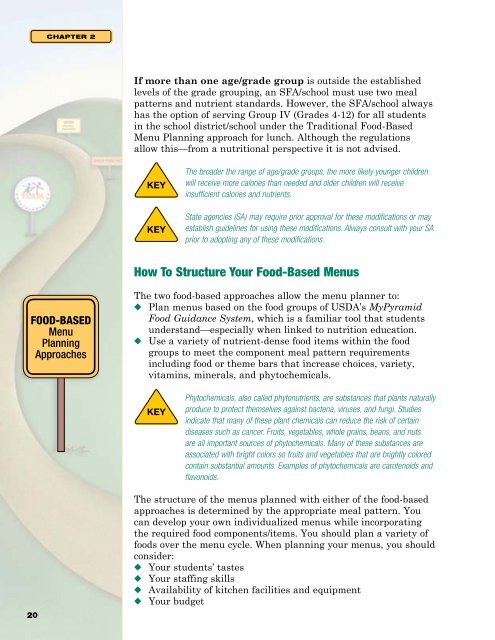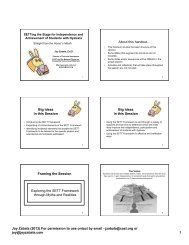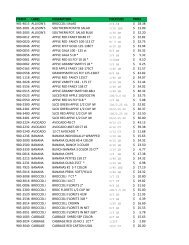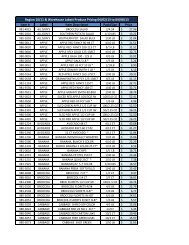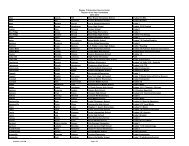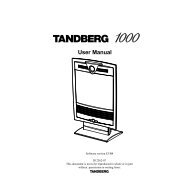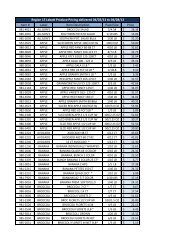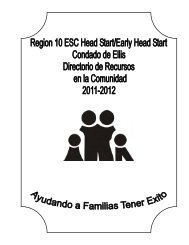Road to SMI Success Manual - Region 10 Education Service Center
Road to SMI Success Manual - Region 10 Education Service Center
Road to SMI Success Manual - Region 10 Education Service Center
You also want an ePaper? Increase the reach of your titles
YUMPU automatically turns print PDFs into web optimized ePapers that Google loves.
Chapter 2<br />
If more than one age/grade group is outside the established<br />
levels of the grade grouping, an SFA/school must use two meal<br />
patterns and nutrient standards. However, the SFA/school always<br />
has the option of serving Group IV (Grades 4-12) for all students<br />
in the school district/school under the Traditional Food-Based<br />
Menu Planning approach for lunch. Although the regulations<br />
allow this—from a nutritional perspective it is not advised.<br />
The broader the range of age/grade groups, the more likely younger children<br />
will receive more calories than needed and older children will receive<br />
insufficient calories and nutrients.<br />
State agencies (SA) may require prior approval for these modifications or may<br />
establish guidelines for using these modifications. Always consult with your SA<br />
prior <strong>to</strong> adopting any of these modifications.<br />
How To Structure Your Food-Based Menus<br />
Food-Based<br />
Menu<br />
Planning<br />
Approaches<br />
The two food-based approaches allow the menu planner <strong>to</strong>:<br />
◆ Plan menus based on the food groups of USDA’s MyPyramid<br />
Food Guidance System, which is a familiar <strong>to</strong>ol that students<br />
understand—especially when linked <strong>to</strong> nutrition education.<br />
◆ Use a variety of nutrient-dense food items within the food<br />
groups <strong>to</strong> meet the component meal pattern requirements<br />
including food or theme bars that increase choices, variety,<br />
vitamins, minerals, and phy<strong>to</strong>chemicals.<br />
Phy<strong>to</strong>chemicals, also called phy<strong>to</strong>nutrients, are substances that plants naturally<br />
produce <strong>to</strong> protect themselves against bacteria, viruses, and fungi. Studies<br />
indicate that many of these plant chemicals can reduce the risk of certain<br />
diseases such as cancer. Fruits, vegetables, whole grains, beans, and nuts<br />
are all important sources of phy<strong>to</strong>chemicals. Many of these substances are<br />
associated with bright colors so fruits and vegetables that are brightly colored<br />
contain substantial amounts. Examples of phy<strong>to</strong>chemicals are carotenoids and<br />
flavonoids.<br />
20<br />
The structure of the menus planned with either of the food-based<br />
approaches is determined by the appropriate meal pattern. You<br />
can develop your own individualized menus while incorporating<br />
the required food components/items. You should plan a variety of<br />
foods over the menu cycle. When planning your menus, you should<br />
consider:<br />
◆<br />
◆<br />
◆<br />
◆<br />
Your students’ tastes<br />
Your staffing skills<br />
Availability of kitchen facilities and equipment<br />
Your budget


